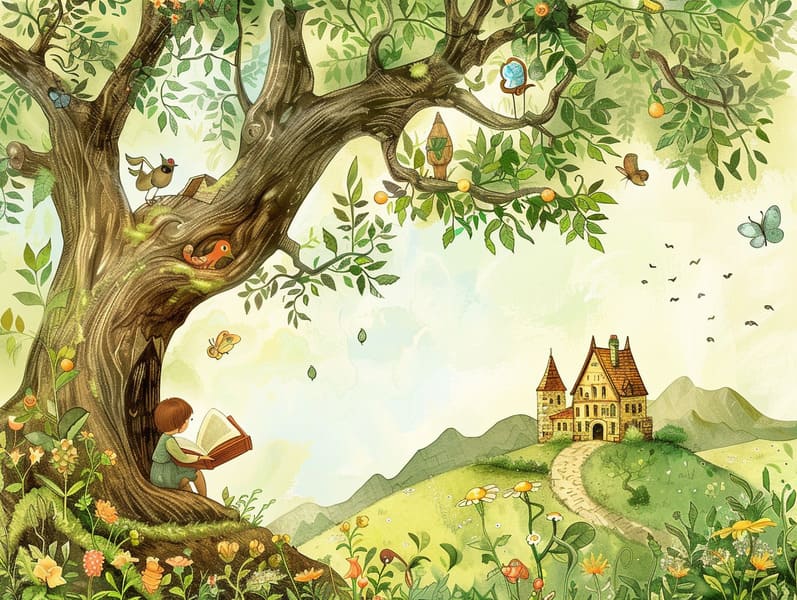The Evolution of Traditional Fairy Tales and the Timeless Allure.
The Evolution of Traditional Fairy Tales and the Timeless Allure.
Blog Article

Historical fairy tales have timeless appeal. These narratives have been told from one generation to the next millennia before they were ever documented. They developed from a variety of societies, including Western traditions. They were initially told among adults, often carrying themes and messages aligned with the societal norms and beliefs of the time.
The famous Grimm duo, Jacob and Wilhelm, were among the first to assemble many of these beloved narratives. Their published works, "Grimm's Fairy Tales," included stories like "The Story of Cinderella," "The Story of Hansel and Gretel," and "Schneewittchen," which have since become hallmarks in the world of iconic fairy tales. Similarly, Hans Christian Andersen's fanciful narratives, such as "The Story of the Little Mermaid," and "The Duckling that Could," have stolen hearts worldwide, solidifying their place in the pantheon of classic fairy tales.
Even though they are old, these tales remain as significant as ever, especially as kids' bedtime tales. These whimsical stories are now available in different formats, including vibrantly illustrated books, whimsical animations, and digital storybooks.
Their unwavering allure can be traced to several delightful features:
Ethical Lessons: Old fairy tales often impart important moral lessons. Fairy tales like "The Shepherd Boy and the Wolf" teach the merit of sincerity, while "The Hare and the Tortoise" emphasize the values of resolve and modesty. These narratives offer young readers clear distinctions between right and wrong, forming their moral compass in a kind yet lasting way.
Sympathy and Perception: Ancient fairy tales frequently showcase protagonists facing problems and hurdles, prompting listeners to sympathize with their struggles and encourage their triumphs. For instance, "The Tale of Beauty and the Beast" emphasizes the necessity of seeing beyond the surface to see the inner being of a individual, cultivating empathy and recognition.
Cultural Comprehension: Many ancient fairy tales are rich in the cultural contexts from which they bloomed. Immersing in these stories can provide enlightening views into different social structures, strengthening a sense of world insight and understanding.
Inventiveness and Imagination: The mythical elements in fairy tales—enchanted objects—motivate children’s fantasy worlds. These narratives carry readers to imaginary realms, fostering creative ideas and a sense of curiosity that endures a lifetime.
Old fairy tales are not only spellbinding but also informative. They function as bewitching tools in advancing various cognitive and emotional skills in kids. When fairy tales are spoken out loud, they strengthen speaking abilities by offering new words and complicated sentence structures. This practice also develops auditory skills and mindfulness, as little ones pay close attention, prepared to see what happens next.
Furthermore, discussing the themes and characters of old fairy tales can cultivate problem-solving abilities and thought processes. The young learn to identify patterns, guess what will happen, and grasp cause and effect. These examinations also benefit young readers reveal their thoughts and feelings, fostering their emotional intelligence.
In today’s high-tech era, the presence of online storybooks has made these fairy tales more obtainable than ever. Digital sites and apps share extensive collections of bedtime fairy tales that can be browsed or heard anytime, anywhere. Fairy tales narrated are particularly sought after, offering an fascinating method for the young to enjoy these fascinating tales. Voice books and narrated videos lead characters and settings to life, often supported by mesmerizing melodies and melodies that heighten the storytelling experience.
The everlasting appeal of timeless fairy tales lies in their ability to transform to present eras while keeping their underlying messages. Contemporary takes of these fairy tales often showcase more varied protagonists and modern settings, making them relevant to today’s audience. However, the central morals of valour, understanding, and righteousness remain unchanged, continuing to move audiences of all ages.
Classic fairy tales also offer a sense of security and comprehensibility. They offer a methodical narrative with a obvious beginning, middle, and end, often wrapping up with the termination of conflicts and the triumph of morality over immorality. This reliability can be encouraging for kids, delivering a sense of sturdiness in an unpredictable world.
Old fairy tales continue to mesmerize and coach new generations, maintaining their grandeur and meaningfulness in modern society. As bedtime stories for kids, they allow a perfect blend of fantasy and learning, fostering moral values, empathy, and creativity. The existence Grimm's fairy tales collection of free fairy tales online and the widespread nature of fairy tales spoken guarantee that these ancient tales remain reachable to new generations.
By safeguarding and circulating these stories, we continue to celebrate the rich tapestry of folklore and cultural heritage. Whether you are browsing a vibrantly illustrated book, experiencing a cyber library, or listening via an audio story, the mystique of bedtime fairy tales is always within reach. These fairy tales teach us of the everlasting nature of narratives and its ability to unify us across generations and cultures.
If you are experiencing a beautifully illustrated book, accessing a digital collection, or listening via an audiobook, the allure of children's fairy tales is always within reach.
These narratives point out of the steadfast strength of narratives and its ability to bond us across time and space, making a tie that enchants and educates alike.